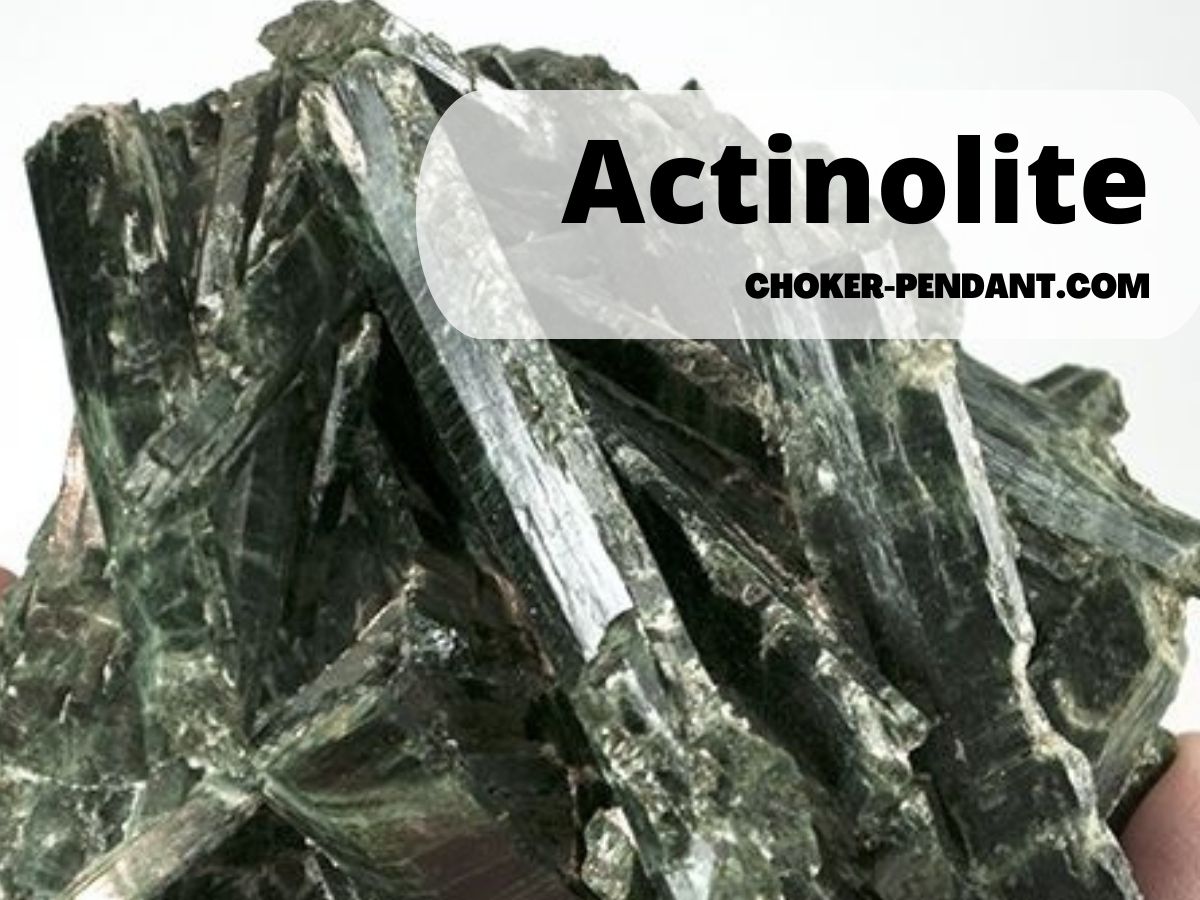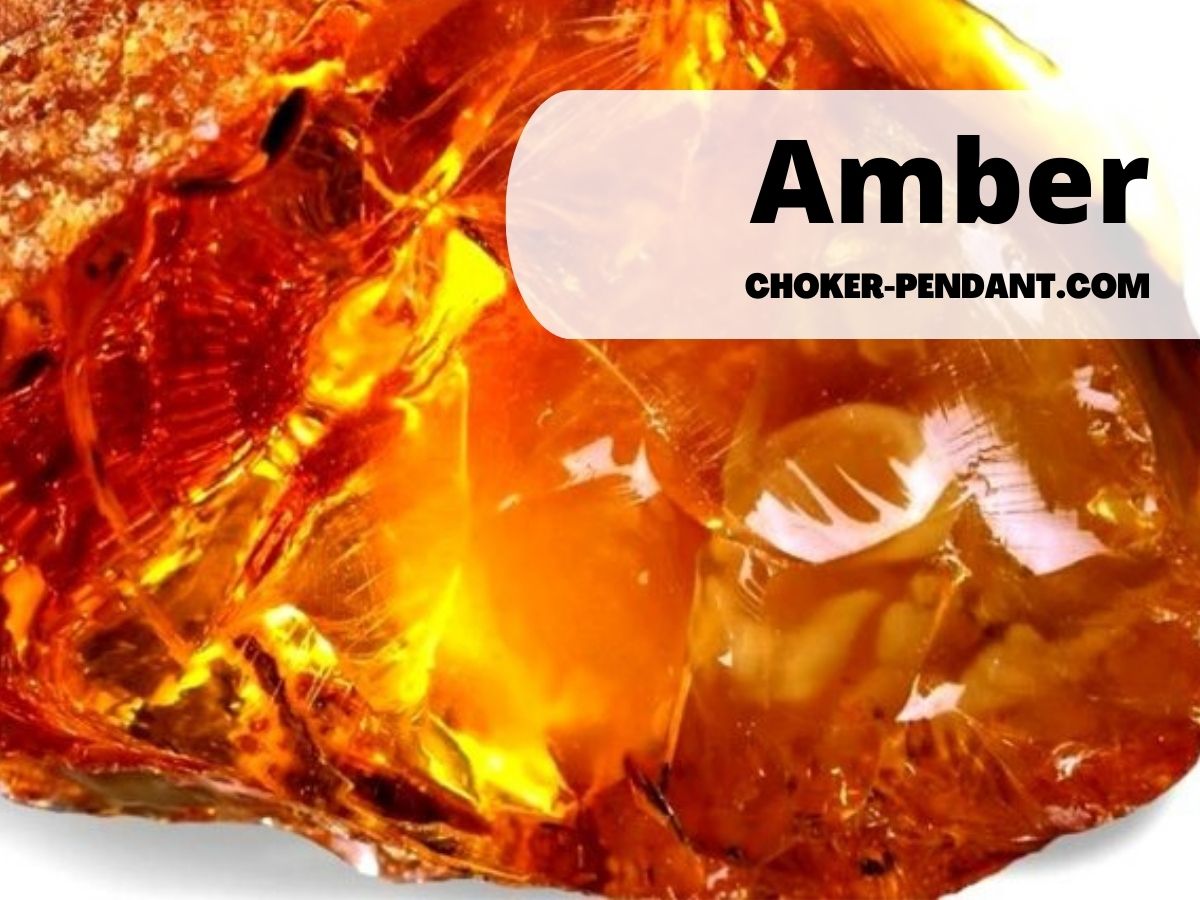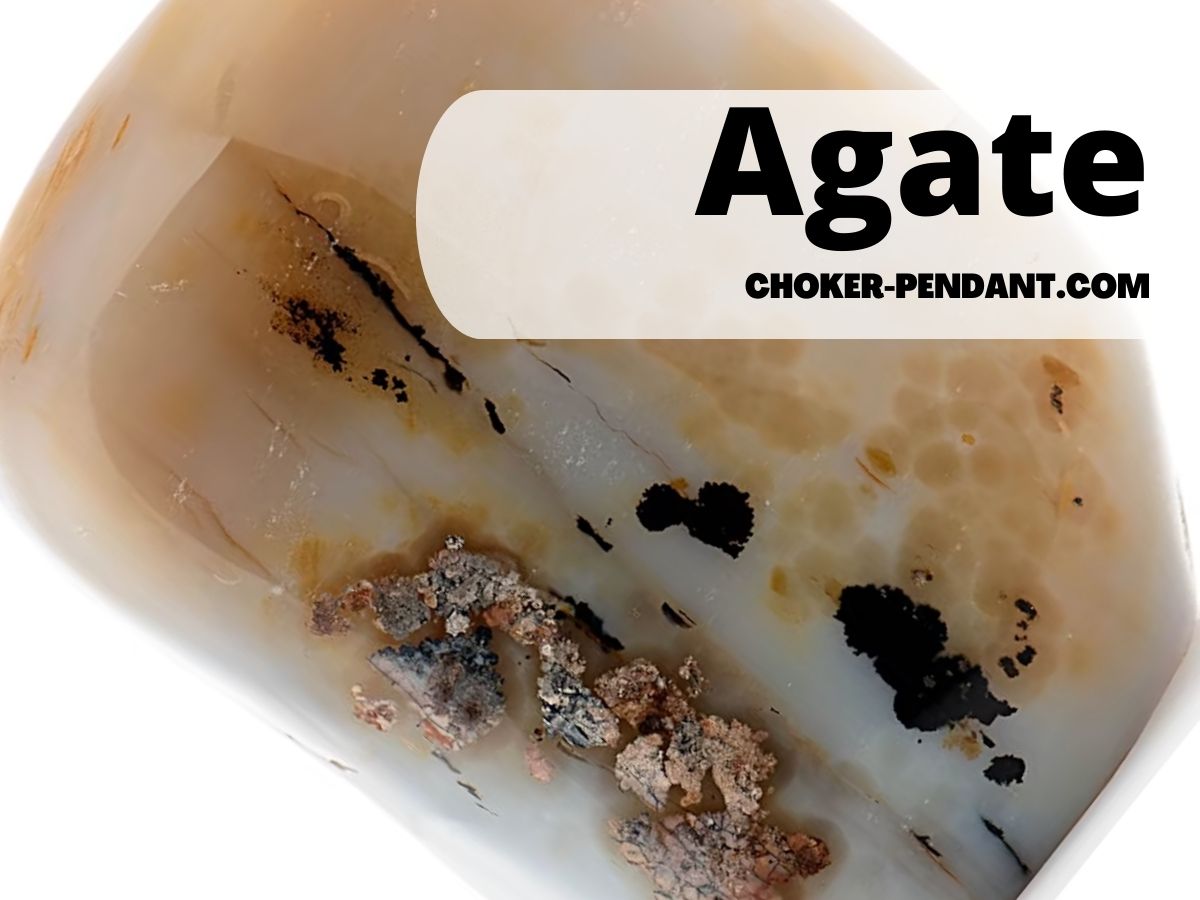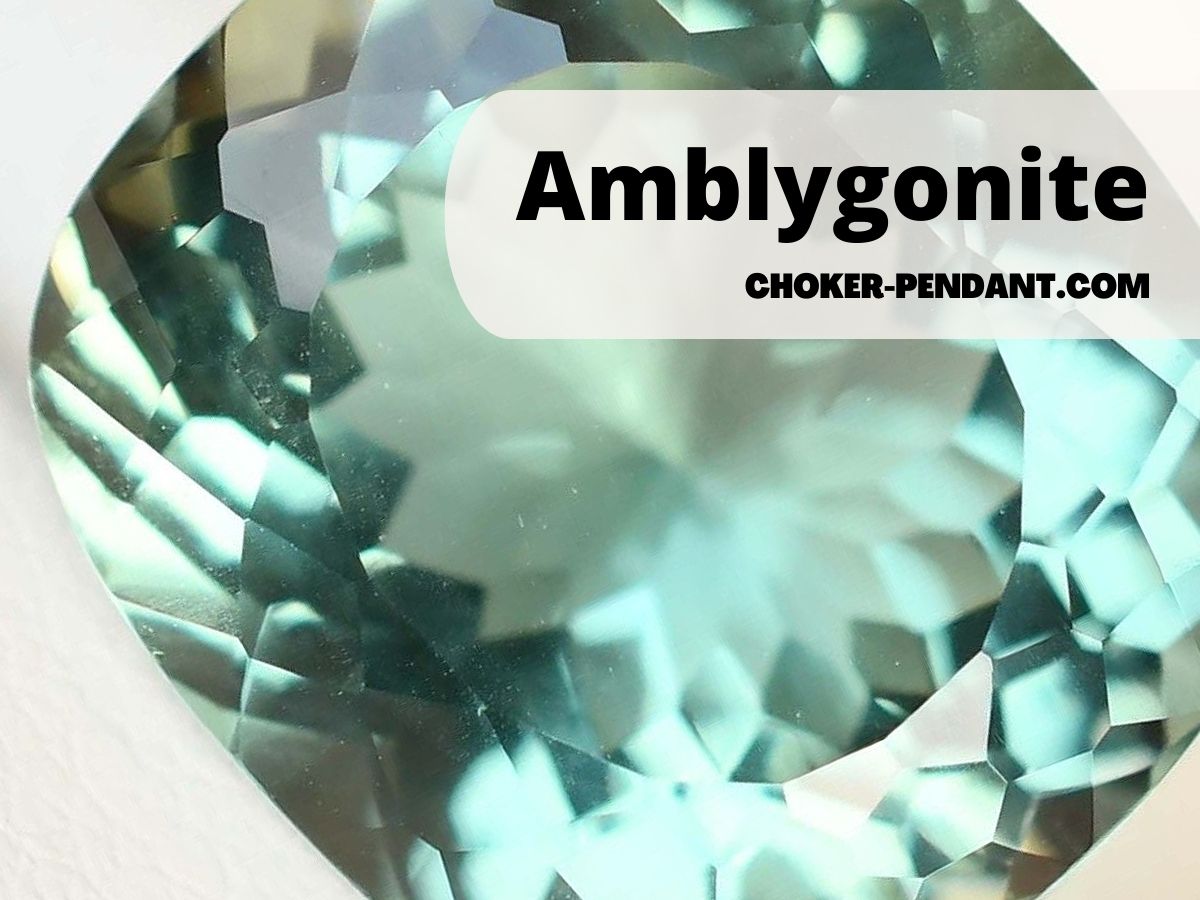What is Actinolite Crystal?
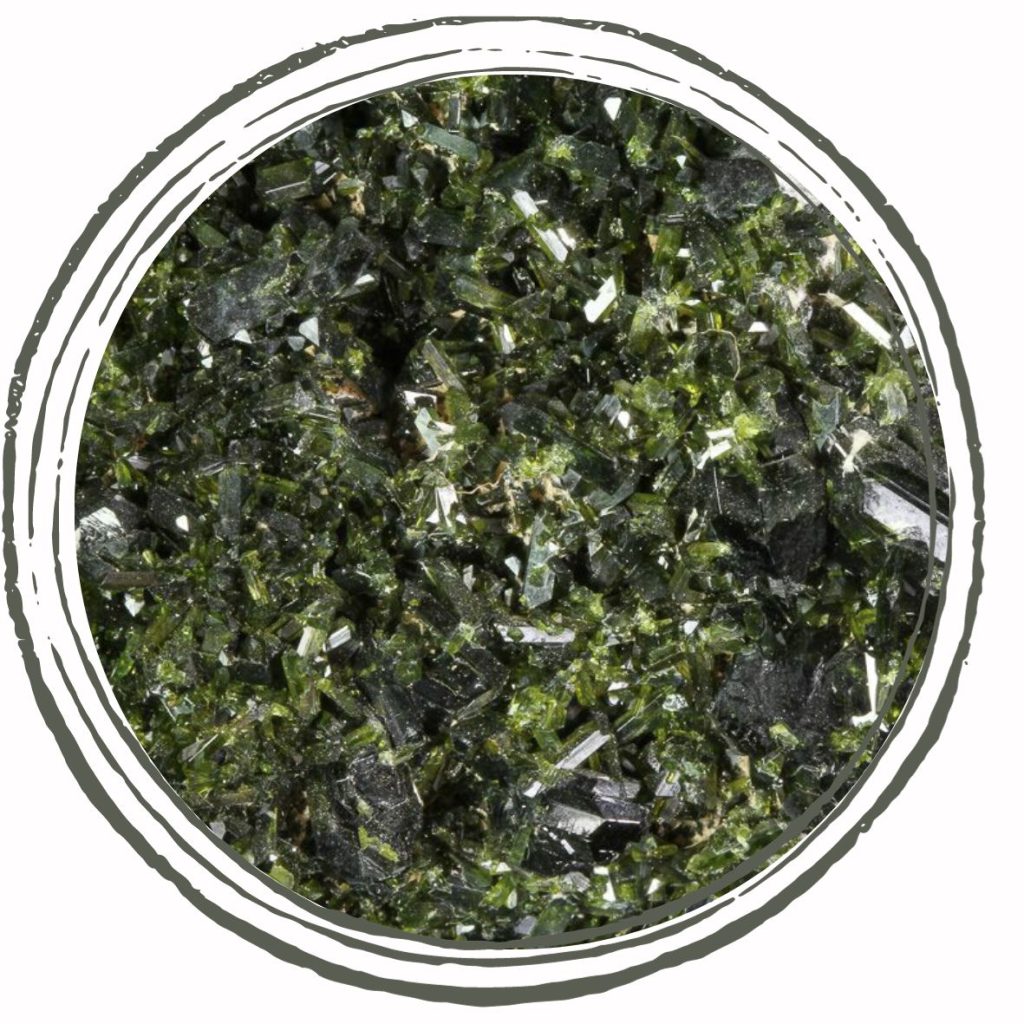
Actinolite is a member of the amphibole mineral group, which is characterized by its long, slender crystals. It is primarily composed of calcium, magnesium, iron, and silicon, and has a chemical formula of Ca2(Mg,Fe)5Si8O22(OH)2. Actinolite is typically found in shades of green, but can also be found in black, brown, or white.
Actinolite, a common mineral in metamorphic rocks, is often found alongside minerals like hornblende, tremolite, and asbestos. It is also present in some igneous and sedimentary rocks, with notable mining locations in Russia, China, Canada, and the United States.
Actinolite Specifications & Characteristics
| Origin of the name: | The name “actinolite” comes from the Greek word “aktis,” meaning ray, due to its common occurrence in radiating forms. |
| Group of belonging: | Amphibole group of minerals |
| Chemical composition: | Calcium magnesium iron silicate hydroxide (Ca2(Mg,Fe)5Si8O22(OH)2) |
| Hardness: | 5.5 to 6 on the Mohs scale |
| Crystal system: | Monoclinic |
| Deposit(s): | Metamorphic, igneous, and sedimentary rocks |
| Cleavage: | Perfect cleavage parallel to {110} |
| Color(s): | Typically green, but can also be found in black, brown, or white |
| Transparency: | Transparent to translucent |
| Luster: | Vitreous to pearly |
| Geological occurrence: | Common in metamorphic rocks, less common in igneous and sedimentary rocks |
Is Actinolite a Suitable Gemstone for Jewelry?
Actinolite is not a commonly used gemstone, but it can be used to make beautiful jewelry. It is a relatively soft mineral with a hardness of 5.5 to 6 on the Mohs scale, so it is important to be careful with it to avoid scratching or chipping. Actinolite also has perfect cleavage, which means that it can break along certain planes more readily than others. This can make it difficult to cut and shape into intricate jewelry designs.
However, actinolite can be used to make beautiful cabochons, pendants, and beads. It is often used in jewelry with protective settings, such as bezels. Actinolite is also sometimes used to make carved gemstones or other decorative objects.
Overall, actinolite is a unique and beautiful gemstone that can be used to make stunning jewelry. However, it is important to be aware of its limitations, such as its softness and cleavage. If you are considering using actinolite in jewelry, it is important to choose a reputable jeweler who can create a piece that is both beautiful and durable.
Historical Significance and Cultural Uses
Actinolite stone holds a significant place in human history due to its various cultural uses and symbolic associations across different civilizations. Throughout ancient times, actinolite was valued not only for its aesthetic appeal but also for its perceived metaphysical properties.
In Ancient Egypt, actinolite was highly regarded as a protective crystal that provided strength and stability. It was often used in amulets or talismans believed to ward off evil spirits while bringing good fortune to those who wore it.
Similarly, in Ancient Greece and Rome, actinolite was associated with divine protection and was believed to bring courage and mental clarity. Cultures across Asia also hold reverence for actinolite stone.
In Chinese folklore, it is considered a symbol of balance between yin and yang energies due to its contrasting green coloration representing life force (yang) against the rocky matrix (yin). In Japan, actinolite was incorporated into various traditional arts, including lacquerware and calligraphy brushes, signifying its status as a precious material.
Today, actinolite crystal continues to be cherished by collectors, gem enthusiasts, and artisans for its aesthetic appeal and revered historical associations. Its enduring popularity is a testament to the timeless beauty and cultural significance of this remarkable mineral.
Geological Formation of Actinolite Stone
Explanation of Metamorphic Processes Leading to its Formation
Actinolite stone is primarily formed through the process of metamorphism, which involves the transformation of existing rocks under high pressure and temperature conditions. Generally, actinolite forms as a result of regional metamorphism, where immense pressures and temperatures act on sedimentary or igneous rocks over long periods. This transformative process occurs deep within the Earth’s crust where tectonic forces converge, creating an environment conducive to mineral recrystallization.
During metamorphism, actinolite commonly originates from rock types such as basalt, gabbro, or diorite due to their mineral composition and favorable conditions for the formation of calcium-rich silicate minerals. The initial precursor rock undergoes significant changes in mineralogy and texture due to the intense heat and pressure exerted upon it.
The process initiates with low-grade metamorphism, where precursor rocks experience mild heating and pressure, leading to the development of actinolite-rich minerals. As temperature and pressure increase with depth within the Earth’s crust during progressive metamorphism, these initial actinolite minerals undergo further transformations.
With each cycle of deformation and recrystallization, actinolite crystals grow larger and align themselves along preferred planes in response to directional stress. This phenomenon results in a foliated texture characteristic of many metamorphic rocks.
Identification of Key Minerals and Elements Present in Actinolite Crystal
Actinolite stone belongs to a group of minerals known as amphiboles – silicate minerals that contain iron, magnesium, calcium, aluminum hydroxides or silicates. Its chemical formula is generally represented as Ca2(Mg,F)e5Si8O22(OH)2.
Besides calcium (Ca) as a major component, actinolite crystal contains varying amounts of iron (Fe), magnesium (Mg), and aluminum (Al). The presence of iron in actinolite accounts for the stone’s green coloration.
Depending on the amount of iron present, actinolite can exhibit a range of shades from pale green to deep emerald-green. Additionally, other elements such as chromium or vanadium may contribute to the stone’s intense green hues.
Silicon and oxygen constitute the primary framework for actinolite’s crystal structure. These tetrahedrally arranged silica units form interconnected chains along with hydroxide groups, resulting in a fibrous or columnar habit of actinolite crystals.
The fibrous nature sometimes gives rise to unique optical phenomena like chatoyancy or cat’s eye effect when properly cut and polished. Actinolite stones commonly contain trace elements such as titanium, aluminum, manganese, and sodium that influence their overall mineral composition.
By analyzing these mineral signatures through various analytical techniques like X-ray diffraction and electron microprobe analysis, geologists can distinguish actinolite from other amphibole minerals with similar properties. The geological formation of Actinolite crystal involves metamorphic processes wherein precursor rocks undergo significant changes under high pressure and temperature conditions.
Through progressive metamorphism, initial actinolite-rich minerals transform into larger crystals aligned along preferred planes due to directional stress. The identification of key minerals such as calcium, iron, magnesium, aluminum, as well as trace elements present in Actinolite crystal provides crucial insights into its chemical composition and distinct physical properties observed in nature.

Physical Properties of Actinolite Stone
Color variations and their causes
Actinolite stone exhibits an intriguing range of color variations, each with its own unique allure. The color spectrum of Actinolite stone extends beyond the commonly associated green hue. While shades of green are predominant, ranging from lush emerald to earthy olive, it can also manifest in delicate shades like pale mint or mesmerizing deep forest tones.
These captivating colors arise due to the presence of various elements and impurities within the crystal lattice. Iron content plays a significant role in determining the coloration of Actinolite stones.
Higher iron content often imparts a deeper and more pronounced green hue, while lower concentrations result in lighter or yellowish-green shades. It is fascinating to note that Actinolite stones with exceptionally high iron content can exhibit a striking black coloration known as “Uralian Jade” due to its resemblance to jadeite.
Furthermore, impurities such as chromium or vanadium can infuse Actinolite stones with a breathtaking bluish-green or even teal tint. This infusion gives rise to stunning variations such as “Chrome Actinolite,” which showcases an intense emerald-like brilliance saturated with hints of blue.
Crystal structure and habit
Actinolite stone possesses a distinct crystal structure characterized by elongated prismatic shapes that lend it an elegant appearance. The crystals are typically acicular (needle-like) or columnar in form, often growing in radiating clusters reminiscent of delicate fern fronds. This fibrous habit contributes to the stone’s unique aesthetic and makes it easily distinguishable from other minerals.
The elongated crystals exhibit well-defined striations along their length, enhancing their visual appeal when examined closely. These striations give rise to a silky sheen on polished surfaces and play a vital role in creating captivating optical phenomena, such as the chatoyant effect observed in Cat’s Eye Actinolite.
Hardness, cleavage, and fracture characteristics
Actinolite crystal ranks at approximately 5.5 to 6 on the Mohs scale of mineral hardness. This moderate level of hardness makes it suitable for carving intricate designs while still being durable enough to withstand daily wear. However, caution should be exercised to avoid exposing Actinolite stones to harsh chemicals or abrasive materials that could potentially damage their surface.
Regarding cleavage and fracture properties, Actinolite crystal exhibits two cleavage directions intersecting at nearly 56° and 124° angles. This means that when subjected to external stress or pressure, Actinolite can split along these planes with relative ease.
However, fractures in this stone tend to display a conchoidal pattern, giving them a shell-like appearance with smooth curved surfaces. Understanding these physical properties of Actinolite stone not only enhances our appreciation for its aesthetic qualities but also enables us to identify and handle it with care when used in decorative arts or jewelry crafting.
Actinolite: A Powerful Healing Crystal
Actinolite is a powerful healing crystal that can be used to improve your physical, mental, and spiritual well-being. It is a stone of grounding and protection, and can help to bring balance and harmony into your life.
Here are some of the benefits of using actinolite for healing:
- Physical healing: Actinolite is said to be beneficial for a variety of physical ailments, including kidney and liver problems, digestive disorders, skin conditions, allergies, headaches, fatigue, and insomnia. It is also said to strengthen the immune system and promote overall healing.
- Mental and emotional healing: Actinolite is a stone of emotional healing and can help to release negative emotions, heal trauma, promote self-love and acceptance, and increase courage and confidence. It is also said to be helpful for people who are struggling with addiction or other forms of self-destructive behavior.
- Spiritual healing: Actinolite is a stone of spiritual healing and can help to connect with your higher self, open the heart chakra, promote compassion and understanding, and increase spiritual awareness. It is also said to be helpful for people who are on a spiritual journey or who are seeking to deepen their connection to the divine.
Varieties of Actinolite Crystal
Classic Green Actinolite: Description, origin, and unique features
Actinolite stone comes in various captivating varieties, each with its own distinct characteristics. One of the most sought-after varieties is the Classic Green Actinolite.
As the name suggests, this type of Actinolite crystal exhibits a mesmerizing emerald-like green coloration that captures the imagination of gemstone enthusiasts worldwide. The vibrant green hue is primarily attributed to the presence of trace amounts of chromium or vanadium within its composition.
The Classic Green Actinolite stones are renowned for their exceptional clarity and luster. Their vivid green color exudes a sense of natural beauty reminiscent of lush vegetation.
These stones often showcase varying degrees of transparency ranging from translucent to semi-transparent, allowing light to penetrate and interact with their internal structure, enhancing their visual appeal. Originating from specific regions such as Austria or Canada, these exquisite gemstones possess a unique charm due to their geographical rarity.
Mines in these regions have yielded Actinolite crystals that have captivated collectors and jewelers alike for centuries. The combination of intense coloration and limited availability makes Classic Green Actinolite a highly prized gemstone in the world market.
Cat’s Eye Actinolite: Formation process and optical phenomena
Another fascinating variety within the realm of Actinolite crystal is the Cat’s Eye Actinolite. This rare variation stands out due to its intriguing optical phenomenon known as chatoyancy or cat’s-eye effect.
Chatoyancy refers to a shimmering band visible across the surface when light interacts with fibrous materials within the stone. The formation process behind Cat’s Eye Actinolite involves intricate geological conditions where fine needle-like mineral fibers align parallelly during crystallization.
As light enters these aligned fibers, it is refracted and reflected, resulting in a captivating band of light that appears to move across the stone’s surface when it is viewed from different angles. This optical effect resembles the slit-like pupils of a cat’s eye, hence the name.
The silky appearance of Cat’s Eye Actinolite further enhances its allure. The fibrous structure within the stone creates a distinct sheen reminiscent of fine silk threads.
This unique combination of chatoyancy and silky texture makes Cat’s Eye Actinolite a rare and sought-after gemstone among connoisseurs and collectors alike. Actinolite crystal offers an array of captivating varieties with their own distinctive qualities.
The Classic Green Actinolite mesmerizes with its stunning emerald-like green hue attributed to trace amounts of chromium or vanadium. Its limited occurrence in specific regions like Austria or Canada adds to its allure.
On the other hand, the Cat’s Eye Actinolite showcases an alluring optical phenomenon called chatoyancy due to its fibrous crystal structure interacting with light. This rare variety exhibits a silky appearance, making it highly coveted by gemstone enthusiasts seeking unique and fascinating pieces for their collections
Uses of Actinolite Crystal in Jewelry and Decorative Arts
Discussion on the Popularity among Gemstone Enthusiasts
Actinolite stone has captivated the hearts of gemstone enthusiasts around the world, owing to its mesmerizing beauty and unique properties. Its striking earthy green color, often resembling a lush forest or vibrant emerald, makes it a sought-after choice for jewelry and decorative arts. The distinctiveness of Actinolite stone lies not only in its captivating appearance but also in its metaphysical properties, which are believed to bring balance and healing energies to those who wear it.
Gemstone enthusiasts are particularly drawn to Actinolite crystal due to its rarity and exclusivity. Unlike more commonly known gemstones like diamonds or rubies, Actinolite stone is relatively uncommon and scarce.
This scarcity contributes to its allure, as individuals seeking something truly unique and distinctive gravitate towards this extraordinary crystal. Its limited availability adds a sense of prestige and exclusivity that only enhances its appeal among collectors and jewelry connoisseurs.
Explanation on How It Is Cut Into Various Shapes for Jewelry Making
To fully unleash the beauty of Actinolite stone in jewelry making, lapidaries employ various cutting techniques to bring out its best features. The process begins with selecting raw Actinolite stones with desirable color saturation and clarity. Skilled artisans meticulously analyze each piece before deciding on the most suitable cut that will showcase both the color intensity and internal characteristics of the stone.
The traditional faceted cut is frequently chosen for Actinolite stones as it allows light to interact with the crystal structure, enhancing its brilliance and luster. This cut reveals the intricate patterns within the crystal while maximizing its reflective qualities.
Alternatively, cabochon cuts are employed when accentuating chatoyancy or cat’s eye effect in Actinolite stones. This cut showcases the unique phenomena where a narrow band of light appears to move across the stone’s surface, resembling the eye of a feline.
Examples of Actinolite-Set Jewelry Pieces from Different Cultures
Throughout history, Actinolite crystal has been valued and utilized in jewelry by various cultures across the globe. In ancient Egypt, Actinolite was believed to possess protective and healing properties.
It adorned amulets and pendants to ward off negative energies and promote spiritual well-being. The Egyptians skillfully combined Actinolite with gold, creating intricate pieces that symbolized divine protection and eternal life.
In Chinese culture, Actinolite-set jewelry is highly regarded for its auspicious symbolism. Combining Actinolite with other gemstones such as jade or carnelian is believed to bring good fortune, prosperity, and harmony into one’s life.
These exquisite creations often incorporate intricate metalwork inspired by nature or represent mythical creatures such as dragons or phoenixes. In modern times, Actinolite-set jewelry has gained popularity among designers who appreciate its distinctive features and metaphysical properties.
Contemporary artists experiment with innovative designs that embrace both traditional techniques and cutting-edge aesthetics. By incorporating Actinolite into necklaces, bracelets, rings, and earrings, these designers create extraordinary pieces that allow wearers to showcase their individuality while enjoying the positive energies associated with this remarkable gemstone.
Actinolite stone’s timeless appeal continues to captivate individuals who appreciate its intrinsic beauty as well as its deeper meaning. Whether it be through traditional cuts that highlight its brilliance or innovative designs that push artistic boundaries, Actinolite-set jewelry elevates personal style while connecting wearers to centuries-old beliefs about harmony and protection.
Conclusion
Embarking on an exploration of actinolite stone reveals a captivating realm where ancient beliefs meet modern aspirations for wellness. Actinolite’s mystical qualities are deeply rooted in its associations with grounding energy, emotional stability, and physical healing benefits. While scientific evidence may not fully support these metaphysical claims, many individuals find solace and inspiration in connecting with actinolite’s subtle vibrations.
By embracing actinolite as both a symbol of strength and a conduit for spiritual growth, one can find comfort in its ability to ground emotions, foster resilience, and encourage self-reflection. Additionally, the perceived physical benefits of actinolite offer hope for those seeking vitality and rejuvenation on their wellness journey.
Ultimately, whether you approach actinolite crystal from a spiritual or scientific perspective or simply appreciate its natural beauty as an exquisite gemstone – there is no denying the allure it holds as an object of fascination throughout history. So let us embrace this enchanting crystal that transcends time itself; through its presence may we find harmony within ourselves and our connection to the world around us.

